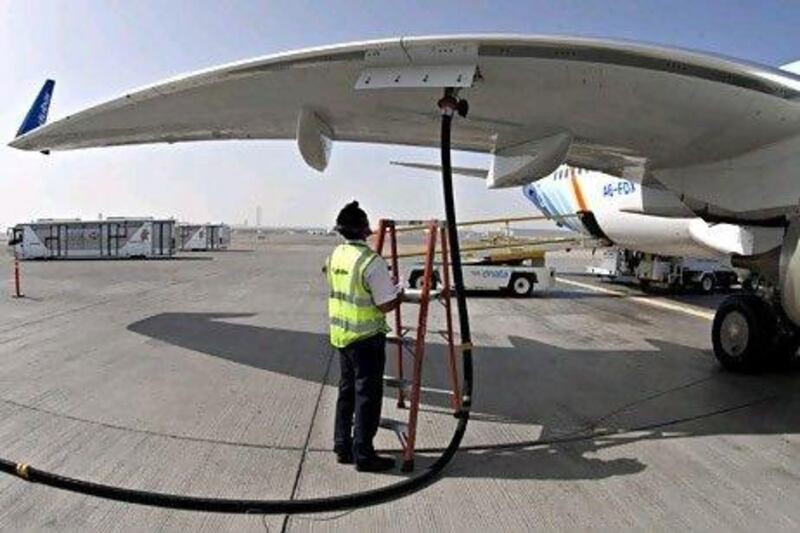Jet fuel costs have jumped by more than US$3 per barrel in just one week, hitting Middle East carriers hard, and are up more than 11 per cent on last year's prices, according to the aviation industry's fuel watchdog.
The latest figures from the International Air Transport Association's (Iata) jet fuel price monitor show that for the week ending February 10, the cost rose worldwide to $133.9 per barrel, from $130.59 the previous week.
However, prices remain below the 2008 level of more than $140 per barrel that had ravaged the airline industry. The increases immediately preceded a decision by Emirates Airlines on Tuesday to impose fuel surcharges of up Dh610 (US$166) per ticket on all its flights from today.
However, James Hogan, the president and chief executive of Etihad Airways, said yesterday the airline, based in Abu Dhabi, had so far been cushioned by its fuel hedging policy, under which it has agreed fuel prices in advance to secure supply at a fixed cost regardless of any fluctuations in price.
"Back in 2006 we took a decision to invest in fuel hedging," Mr Hogan said at the Global Financial Markets Forum in Abu Dhabi. "Last year we hedged 80 per cent of our fuel at $80 a barrel, and at the start of this year we were still hedging at $80. That has gone up to $100 a barrel, but we are now 77 per cent hedged for 2012." According to the Iata monitor, the recent rises will add $32bn to world airlines' fuel bills this year, taking it to an estimated annual $129.7bn.
"Airlines face two big risks: rising oil prices; and Europe's sovereign debt crisis," Tony Tyler, Iata's director general and chief executive, said yesterday. "Both are hanging over the industry's fortunes like the sword of Damocles."
The monitor's most recent figures show jet fuel prices rose 2.3 per cent on the previous week, 2 per cent on the previous month and 13.4 per cent on last year. In the Middle East, the weekly rise was sharper at 2.9 per cent, reported the monitor. On the previous month it was up 2.1 per cent and on the previous year 11.6 per cent.
The recent increase also drove up Iata's world jet fuel price index to 366 points, but the index rise for Middle East airlines, which account for 7 per cent of the world's jet fuel annually, was at 389. The index has been rising steadily from 353.11 in mid-January.
Between 2001 and 2003, fuel costs made up 12 to 13 per cent of an airline's costs. Today it is more than a third. "Fuel price volatility is the major threat to the airline industry," Zacks Investment Research, an analyst based in Chicago, said in a briefing note. "Even a small change in fuel prices can significantly affect profitability. Projecting this key variable with any level of accuracy has always been extremely challenging. Fare hikes and fuel hedging are the most effective tools to abate the negative impact from fuel prices.
"Hedging strategies provide a cushion to the rising fuel prices and is being used extensively by most of the air carriers, but airlines' ability to pass along the increased costs of fuel to their customers is limited by the competitive nature of the airline industry." Oil is at a nine-month high, with Brent crude at $126 per barrel yesterday, driven up by concerns over the fallout from Iran's nuclear programme.
Mr Tyler's warning came as Iata announced global traffic results for January showing a 5.7 per cent rise in passenger demand but an 8 per cent decline in air freight compared with the same month last year. Middle East airlines recorded double-digit traffic growth in January, posting a 14.5 per cent increase. Capacity rose 10.6 per cent, and load factor climbed 2.7 points to 78.5 per cent, among the highest of all global regions.





